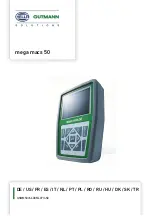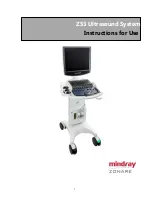
3
Salt Level
Use the chart on page 4 to determine how much salt in pounds or (Kgs) need to be added
to reach the recommended levels. Use the equations below (measurements are in feet/
gallons and meters/liters) if pool size is unknown.
The ideal salt level is between 2700-3400 ppm (parts per million) with 3200 ppm being
optimal. If the level is low, determine the number of gallons in the pool and add salt
according to the chart on page 4. A low salt level will reduce the efficiency of the Aqua
Rite
®
and result in low chlorine production. A high salt level can cause the Aqua Rite
®
to shutdown and may begin to give a salty taste to your pool (generally, the salt will
begin to be tasted at a level of about 3500-4000 ppm). The salt in your pool/spa is
constantly recycled and the loss of salt throughout the swimming season should be
small. This loss is due primarily to the addition of water because of splashing,
backwashing, or draining (because of rain). Salt is not lost due to evaporation.
Type of Salt to Use
It is important to use only sodium chloride (NaCl) salt that is greater than 99% pure. This
is common food quality or water softener salt and is usually available in 40-80 lb. bags
labeled "Coarse Solar Salt". It is also acceptable to use water conditioning salt pellets,
however, it will take longer for them to dissolve. Do not use rock salt, salt with yellow
prussiate of soda, salt with anti-caking additives, or iodized salt.
How to Add or Remove Salt
For new plaster pools, wait 10-14 days before adding salt to allow the plaster to cure.
Turn the circulating pump on and add salt directly into the pool. Brush the salt around
to speed up the dissolving process--do not allow salt to pile up on the bottom of the
pool. Run the filter pump for 24 hours with the suction coming from the main drain (use
pool vac if there is no main drain) to allow the salt to evenly disperse throughout the
pool. The salt display may take 24 hours to respond to the change in salt concentration.
The only way to lower the salt concentration is to partially drain the pool and refill with
fresh water.
Always check stabilizer (cyanuric acid), when checking salt. These levels will most
likely decline together. Use the chart on page 5 to determine how much stabilizer must
be added to raise the level to 80 ppm.
Flow switch connector
Bonding lug to
pool bonding system
Cutout for
cell cable
Gallons
Liters
(pool size in feet)
(pool size in meters)
Rectangular
Round
Oval
Diameter x Diameter x
Average Depth x 5.9
Length x Width x
Average Depth x 6.7
Length x Width x
Average Depth x 7.5
Diameter x Diameter x
Average Depth x 785
Length x Width x
Average Depth x 893
Length x Width x
Average Depth x 1000
Wiring
Power must be shut off at the circuit breaker before performing any wiring. Be sure to
follow Local and NEC electrical codes. To provide safe operation, the Aqua Rite
®
must
be properly grounded and bonded.
Input Power For stand alone operation:
Wire the Aqua Rite to the
LOAD SIDE
of the filter pump timer. It is very important that
the Aqua Rite is powered only when the pump is running.
Refer to the wiring label on the Aqua Rite as well as the diagram below to determine
correct wiring connections. The Aqua Rite is shipped from the factory with the configu-
ration jumpers in 240VAC position. If using 120VAC, move the jumpers as shown below.
For Canadian models, the Aqua Rite shall be connected to a circuit protected by a class
A ground fault interrupter. Be sure to connect the ground wire to the green ground
screw terminal located on the bottom of the enclosure.
Bonding:
A lug used for bonding is attached to the bottom of the Aqua Rite enclosure (see
diagram below). The Aqua Rite must be bonded with an 8 AWG copper wire (6 AWG
Canada) to the pool bonding system.
Electrolytic Cell and Flow Switch:
The electrolytic cell and flow switch cables are terminated with connectors which plug
into the Aqua Rite, for easy attachment and removal. The door of the Aqua Rite must be
open to access the cell cable connector. The flow switch plugs into a connector (similar
to a telephone jack) located outside, on the bottom of the enclosure. Refer to the
diagram below for the location of these connections.
12
SUBPANEL
TIMECLOCK
AQUA
RITE
AQUA
RITE
PCB
PCB
BONDING
LUG
BONDING
LOOP
PUMP
LINE
LOAD
GROUND
GND
GND
IMPORTANT:
MOVE JUMPERS
TO POSITIONS SHOWN
TYPICAL 240 VAC WIRING
120 VAC
Note: Wire the pump directly to the timeclock--do not use the Aqua Rite as a junction box.






































